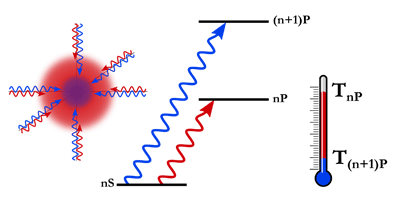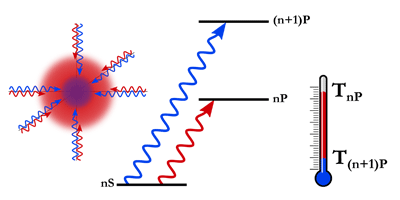Laser Cooling Tuned to the UV
Ultracold fermionic atoms trapped in optical lattices are attractive systems for simulating the behavior of solids and discovering new and exotic states of matter. Compared to solids, these cold-atom traps have the advantage that the interactions between the atoms are tunable and they are relatively defect free, but scientists are still looking for new ways to reach colder temperatures and higher atom densities, where quantum effects become important and ordered phases, such as a quantum magnetic state, could be observed.
In a pair of papers appearing in Physical Review A, groups from Rice University, Texas, and the University of Toronto, Canada, report they have independently achieved record low temperatures and high phase-space densities in clouds of fermionic atoms by laser cooling the atoms in a magneto-optical trap.
The first step in cooling atoms is typically done with a laser tuned to a frequency just below an atomic transition, so that atoms moving toward the light preferentially absorb and re-emit photons, slowing down in the process. The narrower the linewidth of the atomic transition, the lower the temperature that can be reached, and hence the greater the number of atoms that can be included in the next cooling step, evaporative cooling.
Pedro Duarte and his colleagues at Rice have modified the first step and employed the ultraviolet (323 nanometer) transition between the and states in lithium-6, which has a significantly narrower linewidth than the to transition that is conventionally used. This allows them to reach a record low temperature of 59 microkelvin and an order of magnitude higher phase-space density. Likewise, David McKay and his colleagues from Toronto have produced the coldest potassium gas (63 microkelvin) in a magneto-optical trap using the to ultraviolet (405 nanometer) transition in potassium-40.
All alkali atoms have transitions between an state and a state, so this laser cooling technique is likely to be useful in the march to ever-lower temperatures for trapped fermionic atoms. – Sarma Kancharla





